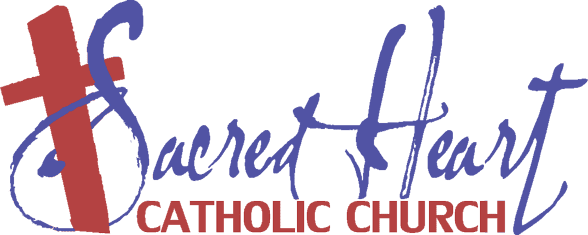Who should I contact first – the parish or the funeral home?
Most often the funeral home has already been contacted through the hospital, hospice center, or nursing home. When time allows, please call the parish to let us know of your loved one’s passing. We will add your loved one, you, and your family to our Prayers of the Faithful. At that same time, we can begin to talk with you and the funeral home.
How do I reserve the church for a funeral?
There are a number of variables that enter into scheduling a funeral: availability of the church, availability of a priest to celebrate, availability of funeral home to support the funeral, and coordinating family and guest travel plans. It is best to have the funeral home contact us to make specific arrangement after the family has met with them. But also please feel free to contact the parish at 813-229-1595. We know that arranging the time can be complex as you consider family and friends traveling from out of town.
When does the parish celebrate funeral masses?
In general, funerals are celebrated at 10:00 am or 2:00 pm on weekdays. We are unable to support Monday morning funerals because of prior sacramental commitments. Saturday funerals are possible, but please remember Sacred Heart celebrates many weddings so often the church has been reserved months in advance.
How do I plan a funeral? I’ve never had to do one before.
Do not think that you have to do everything. Often you are attending to the details of gathering friends and family, so let the funeral home work with the parish to ensure the details are planned in accordance with your desires.
We would encourage you to meet with the priest celebrating the rites with you and the family. The priest can help you to choose readings, select music, and, if helpful, make recommendations.
Where are the Funeral Rites celebrated?
The Funeral Rites are more than just the Funeral Mass. There is a Vigil service that can be celebrated in the funeral home the night before. The Funeral Mass is always celebrated in the Church. The Committal Rite is preferably celebrated at the grave or the tomb.
Can there be a viewing in the Church before the funeral?
Yes. Gathering at the Church before the Funeral Mass begins allows family and friends a time to console one another, to say final goodbyes, and to enter into the spirit of prayer.
What is a funeral Mass like?
The funeral Mass follows the same pattern as a typical Mass with additional elements that draw attention to the place the deceased person had in the life of the mourners and most especially, the Christian belief in resurrection. Some of these elements are:
- Covering the casket with a pall or white cloth which signifies the deceased life in Christ through Baptism. This is often done by family members;
- Sprinkling the casket with holy water, also a remembrance of Baptism;
- Placing Christian symbols on the covered casket. These may include a Bible or a Book of the Gospels (the part of the Bible which recalls the life and words of Jesus) and/or a crucifix.
Is there music at a funeral Mass?
Yes. Special hymns are chosen to be part of the funeral Mass. These speak to God’s presence even in times of sorrow, of our hope in the resurrection and other themes that allow the participants to pray in this difficult time. Our parish music director can help with the selection of appropriate and meaningful hymns.
What else happens at a funeral Mass?
Special readings from sacred scripture are proclaimed. The Order of Christian Funerals offers a wide array of suggestions. Typically, there are one or two readings taken from both or either the Old and New Testament (Hebrew and Christian scriptures), a psalm (usually sung and also taken from the scriptures), and a Gospel reading.
Who may proclaim the readings?
A Baptized Christian usually proclaims the first and second reading. A cantor usually proclaims the psalm and an ordained minister (priest or deacon) proclaims the Gospel.
What are the possible Scripture Readings for a funeral Mass?
Readings for a funeral mass can be found here at the US Catholic Conference of Bishops’s website.
May anyone beside the priest or deacon speak of the deceased during the funeral Mass?
The funeral Mass provides the opportunity for a brief reflection on the life of the deceased so that those who have gathered in support of the family, but who may not know the deceased personally, will have a better appreciation for who this person was.
Are there guidelines for this brief reflection?
The purpose of the reflection is to draw attention to the deceased as his or her life bore witness to the Gospel of Jesus Christ. This is often best done in stories that are special to you and your loved one; stories that reveal the depths of the person you are remembering. It is always important to prepare! A rule of thumb is this: one piece of paper, one side, 1-inch margins, and 12-point print with 1½ line spacing will take about 5 minutes to deliver. You would not want to go much longer during the celebration in Mass.
Is cremation permitted by the Catholic Church?
At one time the Church did not permit cremation because the practice was associated with a direct denial of the resurrection of the body. Since 1963, the Church has permitted cremation for the faithful whose hope is in the resurrection.
How are the Rites celebrated for someone who chooses cremation?
The Rites are celebrated in essentially the same manner as if the loved one is present in a casket.
What is the Rite of Committal?
The Rite of Committal is the third station of the Catholic funeral liturgy, after the Vigil (usually the day or night before the funeral) and the Funeral Mass (or Funeral Liturgy outside Mass). It is normally celebrated at the site of burial.
The rite begins with an Invitation to Prayer, followed by a Scripture Verse, for which there are several options. Then comes the Prayer over the Place of Committal, with seven text options. Next comes the Committal itself, for which there are also seven text options. After which come the Intercessions (four text options), the Lord’s Prayer, a Concluding Prayer (five), the Prayer over the People, with two forms of the final blessing, depending on whether the minister is a cleric or not, and a Dismissal.
A song may conclude the Rite. Where it is the custom, some sign or gesture of leave-taking may be made.
Why is the grave or tomb the preferred site for the Rite of Committal?
The grave or tomb is preferred because the prayers from the ritual express clearly the finality of placing the body in the ground or in the tomb.
Special Circumstances
What rites can be used for miscarried or stillborn infants?
“Funeral Rites may be celebrated for children whose parents intended them to be Baptized but who died before Baptism. In these celebrations, the Christian community entrusts the child to God’s all-embracing love.” (Order of Christian Funeral #237)
What Rites can be used for a suicide victim?
This person is entrusted to God’s love and mercy and is therefore entitled to the usual Funeral Rites.
Can a funeral be celebrated if the person has been away from the Church for a long time?
By virtue of Baptism, this person is entitled to the prayers of the Church including the Funeral Rites.





